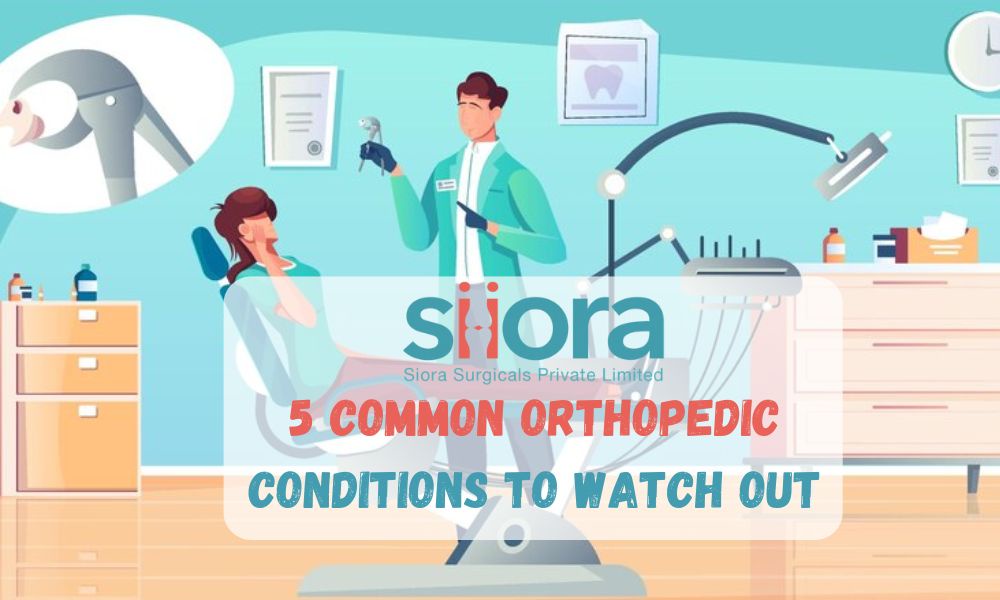Our bodies are incredible machines, but like any machine, they can wear down or get injured. Orthopedics is the branch of medicine that deals with the musculoskeletal system, including bones, joints, muscles, ligaments, tendons, nerves, and skin. Many common conditions can affect this system, causing pain and limiting our mobility. Some conditions can be treated without surgery whereas some require surgery along with the application of Trauma Implants. In this post, we will talk about the 5 most common orthopedic problems.
Common Orthopedic Problems to Consider
Arthritis
Arthritis is of two types and both affect people equally:
Osteoarthritis: Often referred to as "wear and tear" arthritis, it's caused by the breakdown of cartilage, the cushioning material between bones. This causes pain, stiffness, and swelling in the affected joints, commonly knees, hips, hands, and spine.
Rheumatoid Arthritis: It is an autoimmune disease where the body's immune system attacks the joints, causing inflammation, pain, and joint deformity. It can affect multiple joints simultaneously and often extends beyond the joints, impacting other body systems.
Fractures
Broken bones are a common orthopedic issue. Fractures can occur due to a fall, trauma, or repetitive stress. Symptoms include pain, swelling, bruising, deformity, and difficulty using the affected limb. Treatment depends on the severity and location of the fracture, ranging from casting and splinting to surgery.
Low Back Pain
This is a widespread problem with various causes. It can be due to muscle strain, ligament sprain, herniated disc, arthritis, or poor posture. While most back pain resolves on its own with rest and self-care, some cases may require physical therapy, medication, or injections.
Ligament Sprains and Tendon Strains
Sprains occur when a ligament is stretched or torn, while strains involve similar damage to tendons. Symptoms include pain, swelling, bruising, and difficulty moving the affected joint. Treatment typically involves rest, ice, compression, and elevation followed by physical therapy.
Carpal Tunnel Syndrome
This condition causes pain, numbness, and tingling in the hand and fingers due to compression of the median nerve in the wrist. This nerve travels through a narrow tunnel in the wrist called the carpal tunnel. Repetitive motions, such as typing or using tools, can inflame the tendons around the nerve, causing pressure and the characteristic symptoms. Treatment options include splinting, activity modification, anti-inflammatory medication, and in severe cases, surgery to release the compressed nerve.
Maintaining a Healthy Musculoskeletal System
While some orthopedic conditions are related to age or wear and tear, there are steps you can take to promote good musculoskeletal health:
Maintain a healthy weight: Excess weight leads to extra stress on joints and lower weight results in weak joints.
Exercise regularly: Regular physical activity strengthens muscles and bones, improves flexibility, and helps maintain a healthy weight.
Practice good posture: Proper posture aligns your body and reduces stress on your joints.
Warm up before exercise and cool down afterward: This helps prepare your muscles for activity and prevents injuries.
Listen to your body: Don't push through pain. Rest and seek professional help if the pain persists.
To learn about the future of the healthcare industry and connect with global healthcare experts, register for the APHM International Exhibition 2024.


No comments yet